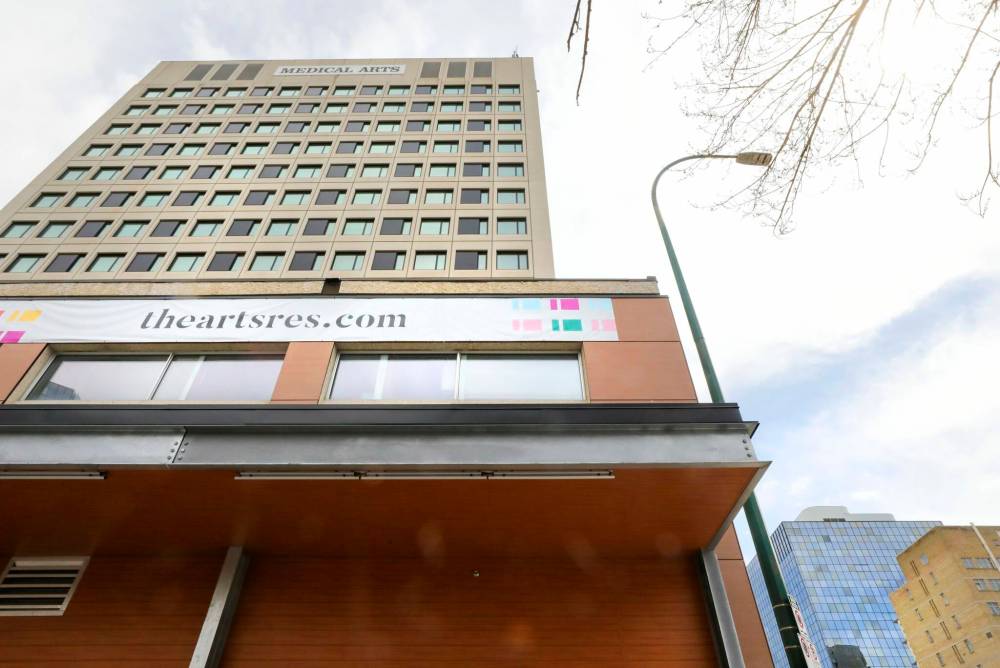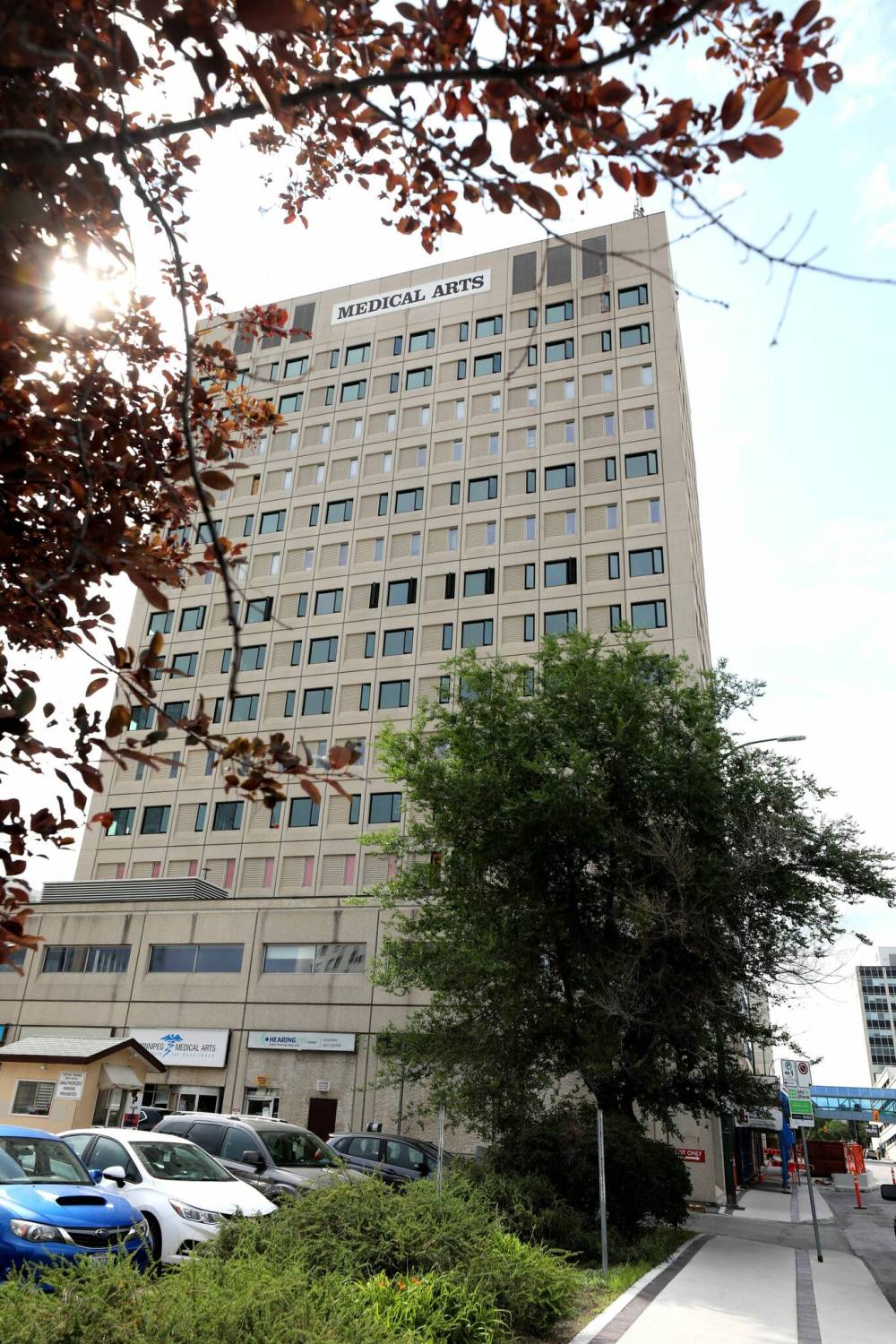From boardrooms to bedrooms
As downtown offices sit empty, opportunities to convert space for residential use arise
Advertisement
Read this article for free:
or
Already have an account? Log in here »
To continue reading, please subscribe:
Monthly Digital Subscription
$1 per week for 24 weeks*
- Enjoy unlimited reading on winnipegfreepress.com
- Read the E-Edition, our digital replica newspaper
- Access News Break, our award-winning app
- Play interactive puzzles
*Billed as $4.00 plus GST every four weeks. After 24 weeks, price increases to the regular rate of $19.00 plus GST every four weeks. Offer available to new and qualified returning subscribers only. Cancel any time.
Monthly Digital Subscription
$4.75/week*
- Enjoy unlimited reading on winnipegfreepress.com
- Read the E-Edition, our digital replica newspaper
- Access News Break, our award-winning app
- Play interactive puzzles
*Billed as $19 plus GST every four weeks. Cancel any time.
To continue reading, please subscribe:
Add Free Press access to your Brandon Sun subscription for only an additional
$1 for the first 4 weeks*
*Your next subscription payment will increase by $1.00 and you will be charged $16.99 plus GST for four weeks. After four weeks, your payment will increase to $23.99 plus GST every four weeks.
Read unlimited articles for free today:
or
Already have an account? Log in here »
Hey there, time traveller!
This article was published 04/03/2024 (586 days ago), so information in it may no longer be current.
Amid Winnipeg’s highest downtown office vacancy rate in history, the prospect of converting currently unused space into residential units is gaining steam.
There is more than 1.9 million square feet of unfilled office space (19 per cent of inventory) in the city’s core, according to a recent report by CBRE, a worldwide commercial real estate firm. Just 10.8 per cent of space was available prior to the COVID-19 pandemic.
Nearly every other major market in North America is reporting the same hole in their office market, says Paul Kornelsen, Manitoba vice-president and managing director at CBRE.

Winnipeg has the sixth-lowest vacancy rate among the 13 Canadian cities surveyed in the report. Victoria is in the best shape, with 10.6 per cent of its office space available; Calgary was the worst of the bunch at 27.9 per cent.
“We’re a steady market that doesn’t generally have that ability to take on a lot of office space in a positive way in a short amount of time, and so it’s sort of been by attrition,” Kornelsen said.
“We’ve been losing slowly and surely. We’re not seeing the death of the office market, I don’t expect that we’ll see 30 or 40 per cent vacancy like we’re seeing in some of these more tech-office cities, but we’re kind of looking for it to stabilize rather than really swing back in a vibrant way soon.
“Probably, we’re trying to find what the bottom is going to be here in the next year or two.”
As a result, building conversions could become even more common as financial pressure builds on property owners while they sit on mortgages with high interest rates.
The writing has been on the wall, Kornelsen said.
Conversions were talked about prior to the pandemic, as modern ‘hoteling’ office spaces with less private rooms and more collaborative workspaces rose in popularity.
“So those trends were in the works and then all of a sudden there was the pandemic and so it was kind of like pouring gas on a fire and saying, ‘We need to get to this faster,’” he said.
“I think it’s just natural conclusion (from) seeing a problem and seeing a potential solution of we have too much office space, we don’t have enough residential space and, as a city, we want to have a healthy downtown and to have a healthy downtown we need people downtown. If they’re not gonna be working down here, can they be living down here?”
Demolition is an unlikely outcome for most buildings, Kornelsen said. Rather, The mind naturally turns to residential opportunities.
Several buildings in Winnipeg’s downtown have been transformed in recent years.
The century-old Sterling Building at 238 Portage Ave. was converted into 64 suites in 2018. Then the upper 10 floors of 433 Main St. (home to the federal passport office) was transformed.
The most recent sizable makeover came at the Medical Arts Building, which was retrofitted into 104 apartment units in 2021.

Currently, the top six floors at 175 Carlton St., are nearing the end of a $4.5-million retrofit into 35 rental units.
Greg Hasiuk, partner and practice leader at Number TEN Architectural Group, helped transform the Medical Arts Building and is involved in designing the $130-million conversion of the iconic downtown Hudson’s Bay building into a mixed-use development with more than 300 residential units.
Building conversions, while they have the potential to be a worthwhile investment for developers, aren’t as easy as putting up a few extra walls and need to check some important boxes to be even be considered a candidate, he said.
“A lot of times, people might think, ‘You’re going to save a ton of money by converting an office building into residential because you can reuse all this stuff,’” Hasiuk said. “In actuality, usually you have to gut the entire mechanical-electrical system and most of the plumbing because the mechanical systems for an office building are very different than for individual apartments.
“What you’re saving on is the structural foundation and often you can also reuse the building envelope, which might be worth maybe 20 to 40 per cent.”
Hasiuk outlined six criteria a conversion candidate often needs to meet: site context (is it in a walkable neighbourhood? Is it close to transit? Does it have lots of natural light? Are there obstructed views?); the shape of the building; the floor plate (ideal candidates offer a narrower floor plate); the envelope (the skin of the building — how energy efficient is the insulation? What is the window-to-wall ratio?); and servicing (parking options, the structure itself, mechanical, electrical, plumbing).
Hasiuk added his own criteria of “culture and heritage,” pointing to the former Bay building, now owned by the Southern Chiefs’ Organization, and the Manitoba Métis Federation converting a former Bank of Montreal into an interpretive centre.
“These are powerful, cultural messages connected to truth and reconciliation,” he said. “Also, the government is supporting efforts around truth and reconciliation to empower Indigenous organizations to do this.”
A recent outlook from CBRE predicted commercial real estate investment activity will increase by five per cent in 2024, after declining more than 15 per cent last year, as credit conditions return to normal and investors get better access to capital.
joushua.frey-sam@freepress.mb.ca

Josh Frey-Sam reports on sports and business at the Free Press. Josh got his start at the paper in 2022, just weeks after graduating from the Creative Communications program at Red River College. He reports primarily on amateur teams and athletes in sports. Read more about Josh.
Every piece of reporting Josh produces is reviewed by an editing team before it is posted online or published in print — part of the Free Press‘s tradition, since 1872, of producing reliable independent journalism. Read more about Free Press’s history and mandate, and learn how our newsroom operates.
Our newsroom depends on a growing audience of readers to power our journalism. If you are not a paid reader, please consider becoming a subscriber.
Our newsroom depends on its audience of readers to power our journalism. Thank you for your support.
History
Updated on Monday, March 4, 2024 12:05 PM CST: Correct building location









